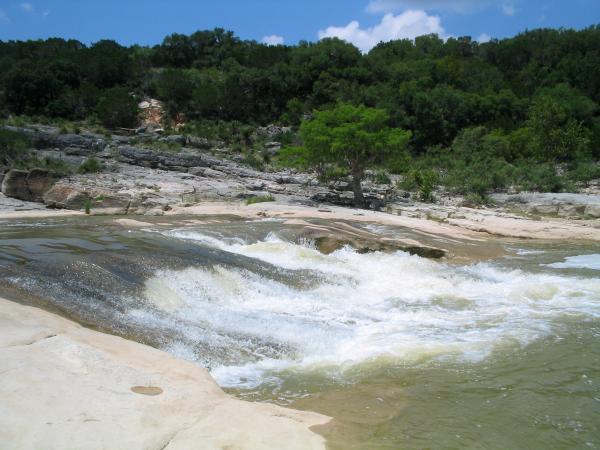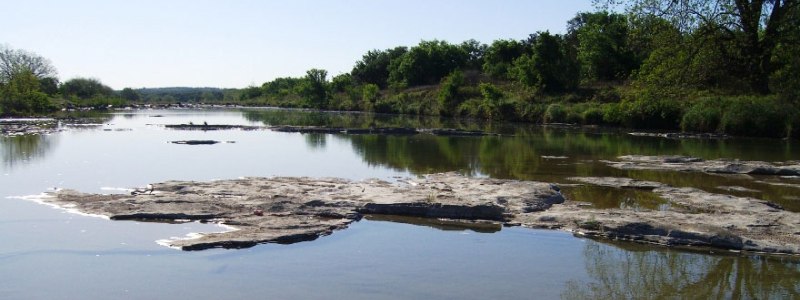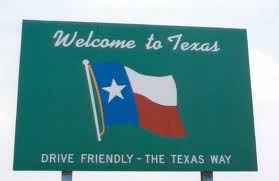| The Pedernales River (pronounced "Perdenales" by
native Texans) rises from springs in the southeastern corner of
Kimble
County and flows northeast for 106 miles, crossing
Gillespie,
Blanco,
and Hays counties, to its mouth on Lake Travis, near Briarcliff in
western Travis County. The terrain near the river is flat to rolling
with local escarpments, and its fine sandy loams support the juniper,
bald cypress, mesquite, and grasses characteristic of the Hill Country.
The name Pedernales, which is the Spanish term for the flint rocks that
characterize the riverbed, was first used by explorers and missionaries
in the mid-eighteenth century. In 1750 Fray Benito Fernández de Santa
Ana proposed a plan to the Spanish government to establish a new mission
site among the Lipan Apache Indians who lived along the Pedernales. José
Mares and Pedro Vial crossed the river in 1788 and 1789, respectively.
Also in 1789 the river was the site of a skirmish between Col. Francisco
Xavier Ugalde and a party of Lipan and Mescalero Indians.
Fredericksburg, established in 1846 by German immigrants, was the
earliest permanent settlement on the Pedernales. Some settlers moved as
far west as the site of present Harper in the 1860s, but the threat of
Indian raids prevented development of the town until 1883. Johnson City
in Blanco County was founded in the late 1870s. The upper reaches of the
Pedernales River are generally too shallow for recreational use, but the
middle and lower reaches of the river provide good white water,
especially during periods of high runoff. Two parks have been
established along the Pedernales: Pedernales Falls State Park and Lyndon
B. Johnson State Historical Park. The Pedernales has been dammed near
Johnson City to form Johnson City Lake. |





